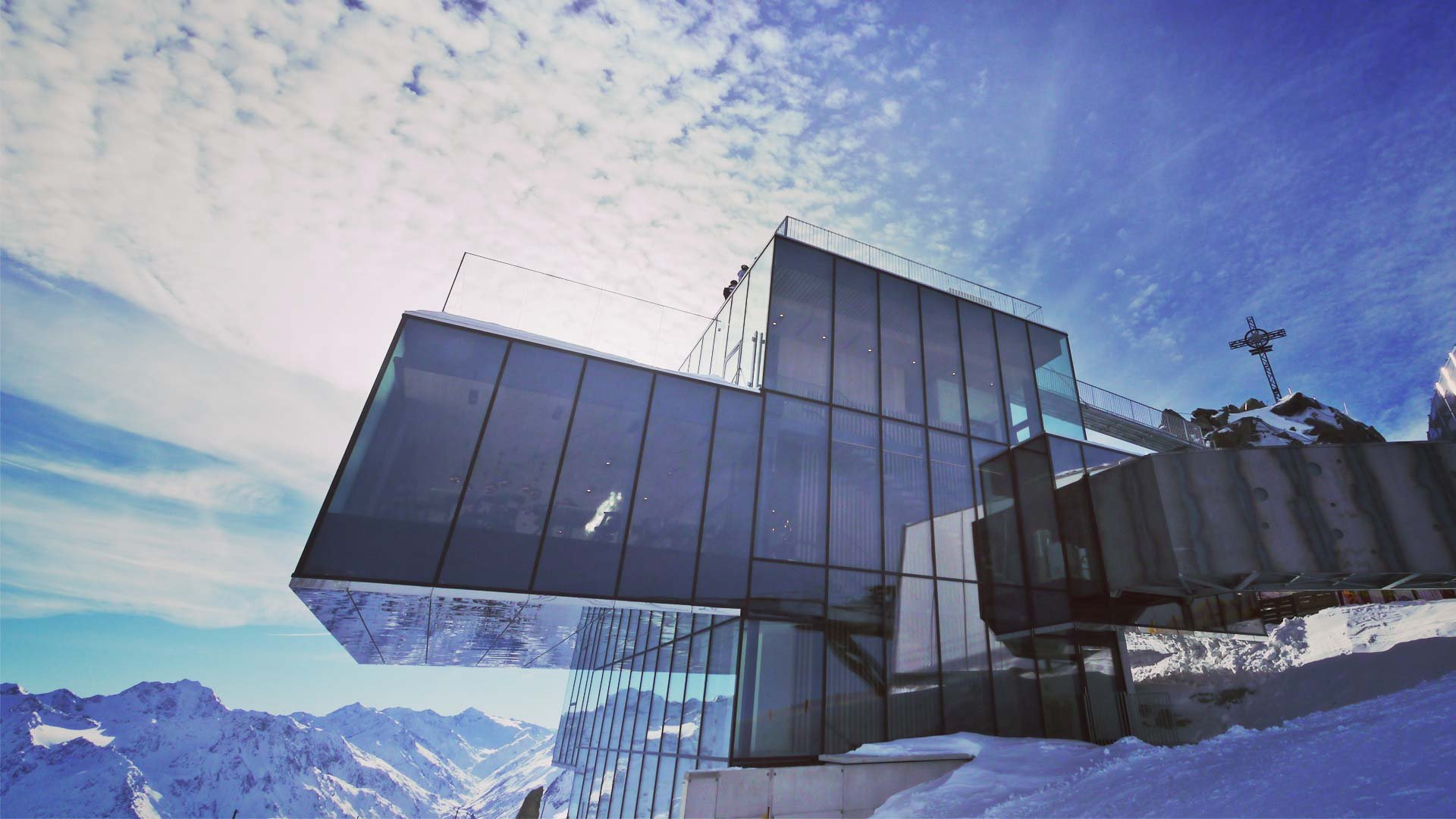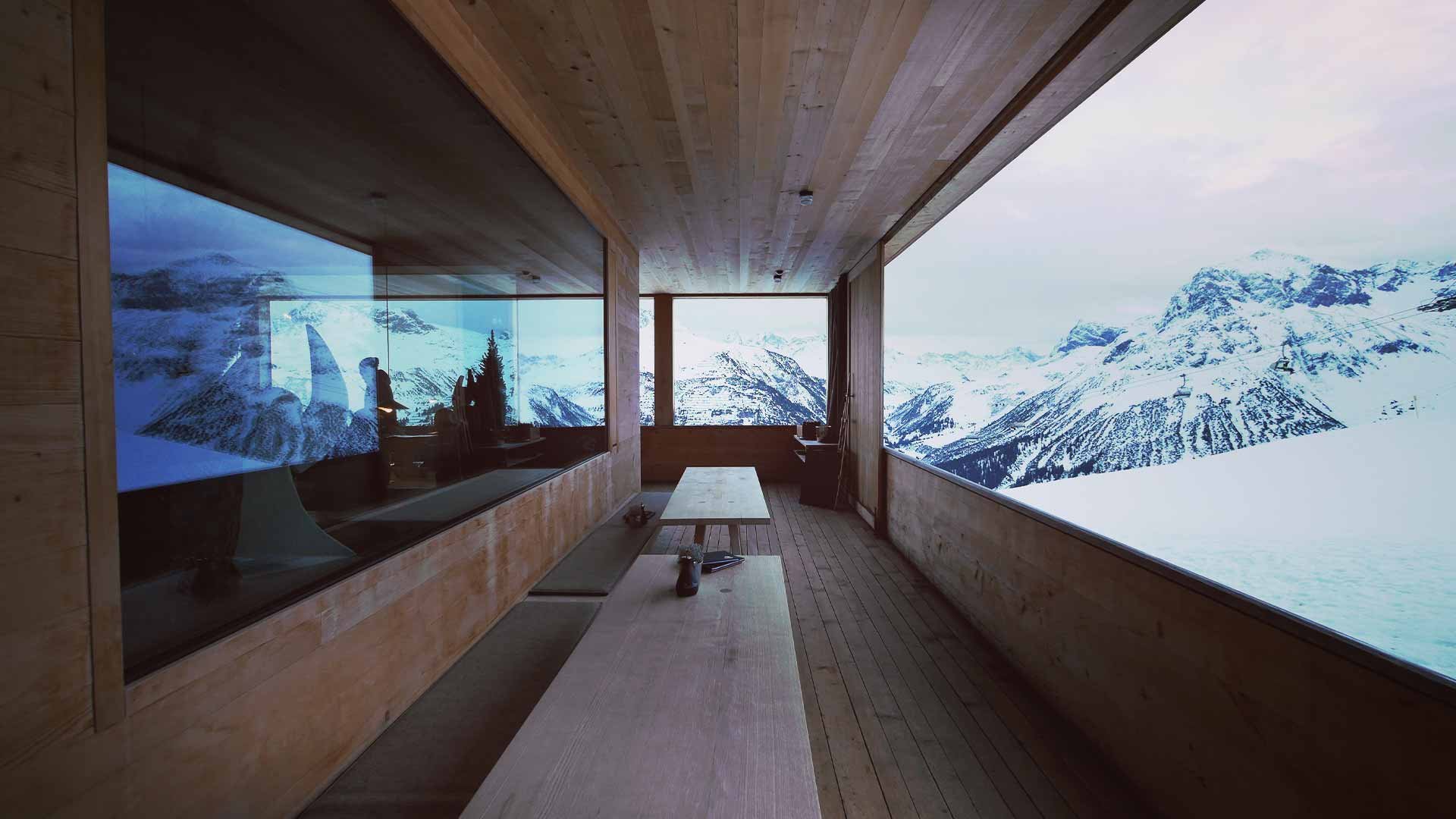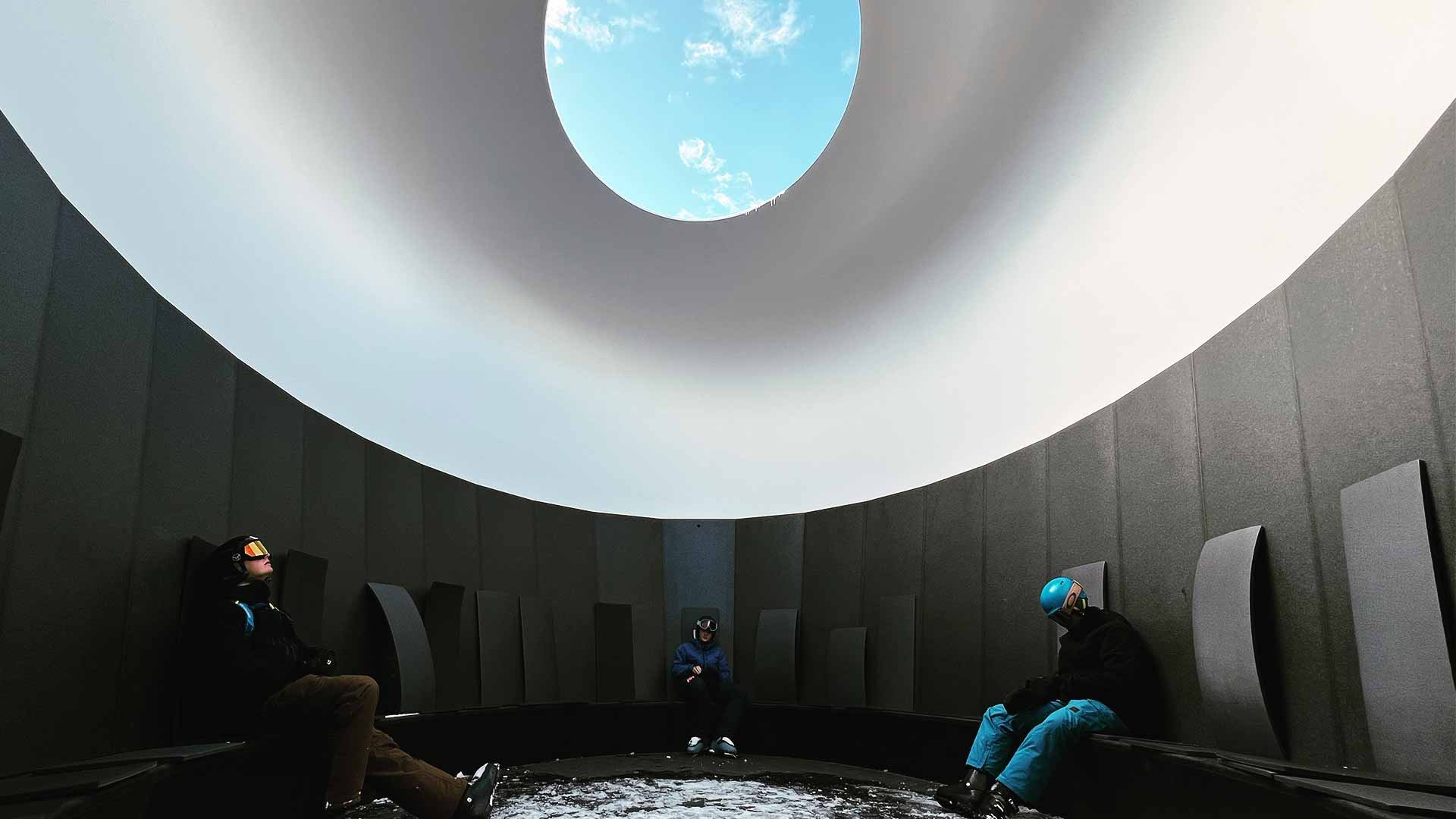
Oct. 9, 2025
Glass has become the go-to material of modern alpine architecture. Panoramic windows and cantilevered viewing platforms allow nature to penetrate interior spaces, blurring the line between shelter and scenery.
For meeting venues and mountain lodges, expansive glass facades transform gatherings into experiences — daylight becomes part of the décor, and shifting weather patterns provide an ever-changing backdrop. The transparency of glass is symbolic too: it represents openness, vision, and the clarity that high-altitude spaces seem to bring to both thought and conversation. Glass mirrors the highest peaks in the Austrian Tirol at IceQ, Sölden and offers stunning connection between nature and meeting and dining spaces. The step into the void platform in Chamonix allows brave clients to hover on safety glass over the precipitous drops of the Aiguille du Midi.

If glass connects guests to the landscape, wood connects them to the culture of the Alps. Once purely functional, alpine timber design has evolved into something sleek yet soulful, utilising local larch, oak, and spruce in clean-lined interiors that retain their warmth and authenticity.
Modern architects use wood not only for its physical appeal but for its sustainability and resonance with tradition. Inside a renovated mountain hut or meeting lodge, the scent and texture of natural timber create a sensory link to the forests that surround it. The result is comfort without excess, design that feels organic, and an atmosphere that encourages both focus and relaxation. The Wolf Hut above Lech am Arlberg is a gem, with a functionalist design and abundant use of timber. One of the most remarkable formations in the Dolomites, the Drei Zinnen are showcased from a lookout terrace, their staggering formations poking out of a distant valley.

Where glass and wood evoke lightness and warmth, stone anchors the architecture — a reminder of the enduring power of the mountains themselves. From rough-hewn granite bases to polished local marble details, stone gives alpine buildings their gravitas.
Many contemporary huts and viewing stations now combine stone foundations with glass walls and wooden interiors, creating a perfect architectural metaphor: strength supporting openness. The use of local stone not only minimises environmental impact but also ensures that new structures feel as though they belong — rooted, natural, timeless.
Architects are reimagining the mountain hut as both retreat and statement piece - places where guests can gather, dine, or meet while surrounded by the raw beauty of the high Alps. Gone are the restricted windows of the past -walls of glass now shield the guest from the elements, yet keep them immersed in the drama of terrain. These are inspiring venues that take events to new heights.
